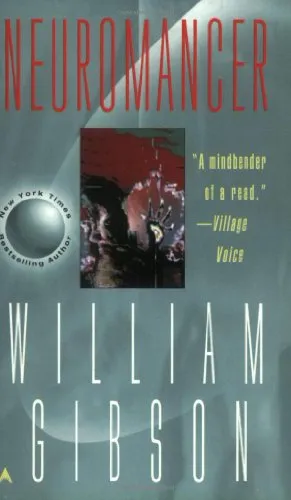Peripheral and Spinal Mechanisms in the Neural Control of Movement
4.3
بر اساس نظر کاربران

شما میتونید سوالاتتون در باره کتاب رو از هوش مصنوعیش بعد از ورود بپرسید
هر دانلود یا پرسش از هوش مصنوعی 2 امتیاز لازم دارد، برای بدست آوردن امتیاز رایگان، به صفحه ی راهنمای امتیازات سر بزنید و یک سری کار ارزشمند انجام بدینکتاب های مرتبط:
معرفی کتاب: مکانیزمهای پیرامونی و نخاعی در کنترل عصبی حرکت
کتاب "Peripheral and Spinal Mechanisms in the Neural Control of Movement" یک اثر جامع و عمیق است که به بررسی مکانیزمهای پیرامونی و نخاعی در کنترل عصبی حرکت میپردازد. این کتاب با ویرایش M.D. Binder ارائه شده و به عنوان منبعی ارزشمند برای پژوهشگران، دانشجویان و علاقهمندان به علوم عصبی و فیزیولوژی شناخته میشود.
خلاصهای از کتاب
این کتاب به بررسی دقیق و گسترده چگونگی عملکرد مکانیزمهای پیرامونی و نخاعی در سیستم عصبی مرکزی میپردازد. در فصلهای اولیه، مفاهیم بنیادی مورد بحث قرار میگیرد و در ادامه، نقشهای مختلفی که عناصر نخاعی و پیرامونی در کنترل حرکت ایفا میکنند با عمق بیشتری مورد بررسی قرار میگیرد. کتاب شامل نمودارها، تصاویر و مثالهای متعددی است که درک بهتر موضوعات پیچیده را تسهیل میکند.
نکات کلیدی
- درک عمیق از ارتباط بین سیستم عصبی مرکزی و محیطی در کنترل حرکت.
- بررسی و تحلیل مکانیزمهای نخاعی و نقش حیاتی آنها در همگامسازی و تنظیم حرکت.
- شناسایی تاثیرات عوامل محیطی و آناتومیکی بر رفتارهای حرکتی بدن.
جملات معروف از کتاب
“The spinal cord is not merely a conduit for neural signals; it is an active participant in the generation and modulation of motor activity.”
“Understanding the peripheral mechanisms enables us to appreciate the complexity and sophistication of neural control.”
چرا این کتاب مهم است
این کتاب به دلیل تحلیل دقیق و علمی سیستمهای نخاعی و پیرامونی در کنترل حرکتی، یکی از آثار مرجع در حوزه فیزیولوژی عصبی محسوب میشود. این منبع اطلاعاتی ارزشمند برای پژوهشگران و دانشجویان محقق به مسائل عصبی، به ویژه در درک و توسعه روشهای درمانی جدید در ناهنجاریهای حرکتی و سیستم عصبی مرکزی نقش مهمی ایفا میکند.
Welcome to 'Peripheral and Spinal Mechanisms in the Neural Control of Movement', an in-depth exploration of the complex neural processes that govern movement. This book delves into the sophisticated interactions between peripheral and spinal mechanisms, offering insights into how they contribute to motor control.
Detailed Summary
In 'Peripheral and Spinal Mechanisms in the Neural Control of Movement', readers are taken on a journey through the intricate workings of the nervous system as it pertains to movement. The book dissects the neural circuits involved in motor control, examining both the peripheral nervous system and spinal cord's roles. Emphasizing the latest research, the text provides a comprehensive overview of the neurobiological underpinnings that facilitate movement.
We begin with an analysis of the basic anatomy and physiology of the motor systems, progressing to detailed discussions on sensory-motor integration, reflexes, and the modulation of motor outputs. The contribution of sensory feedback to motor precision and error correction forms a crucial component of the narrative, highlighting the body’s ability to adapt and refine movement in real time.
Advanced chapters focus on pathological conditions that affect motor control, offering insights into how diseases disrupt normal neural functioning. These sections provide a foundation for understanding the therapeutic approaches aimed at alleviating such conditions. The book also explores technological advancements, including neuroprosthetics and robotics, in aiding individuals with motor impairments.
Key Takeaways
- A thorough understanding of motor control necessitates a grasp of both peripheral and spinal contributions.
- Sensory feedback is essential for the adaptation and refinement of movements.
- Interdisciplinary research is vital for developing interventions for motor disorders.
- Technological innovations offer promising advancements for individuals with movement impairments.
The book is designed to serve as a crucial resource for students, researchers, and clinicians interested in the neurological basis of movement, offering both theoretical foundations and practical insights for future research and clinical applications.
Famous Quotes from the Book
"The elegance of movement belies the complexity of the underlying neural mechanisms."
"In understanding the orchestra of movement, the spinal cord plays the role of a conductor, ensuring harmony and coordination."
Why This Book Matters
This book is instrumental in bridging the gap between fundamental neuroscience and clinical application. By elucidating the intricate connections and pathways that regulate movement, it serves as an essential guide for developing a deeper appreciation of the neurological aspects that underlie everyday actions. The insights provided are not only academically enriching but also vital for advancing clinical practices that address motor dysfunctions.
Through its structured approach and detailed analysis, 'Peripheral and Spinal Mechanisms in the Neural Control of Movement' equips readers with the knowledge to comprehend and engage with the dynamic field of motor neuroscience. It highlights the importance of continued research and innovation, ultimately aiming to improve the quality of life for individuals affected by motor disorders. By fostering a better understanding of the neural control of movement, the book charts a path towards more effective therapeutic strategies and technologies.
دانلود رایگان مستقیم
شما میتونید سوالاتتون در باره کتاب رو از هوش مصنوعیش بعد از ورود بپرسید
دسترسی به کتابها از طریق پلتفرمهای قانونی و کتابخانههای عمومی نه تنها از حقوق نویسندگان و ناشران حمایت میکند، بلکه به پایداری فرهنگ کتابخوانی نیز کمک میرساند. پیش از دانلود، لحظهای به بررسی این گزینهها فکر کنید.
این کتاب رو در پلتفرم های دیگه ببینید
WorldCat به شما کمک میکنه تا کتاب ها رو در کتابخانه های سراسر دنیا پیدا کنید
امتیازها، نظرات تخصصی و صحبت ها درباره کتاب را در Goodreads ببینید
کتابهای کمیاب یا دست دوم را در AbeBooks پیدا کنید و بخرید
1345
بازدید4.3
امتیاز50
نظر98%
رضایتنظرات:
4.3
بر اساس 0 نظر کاربران
"کیفیت چاپ عالی بود، خیلی راضیام"
Questions & Answers
Ask questions about this book or help others by answering
No questions yet. Be the first to ask!



